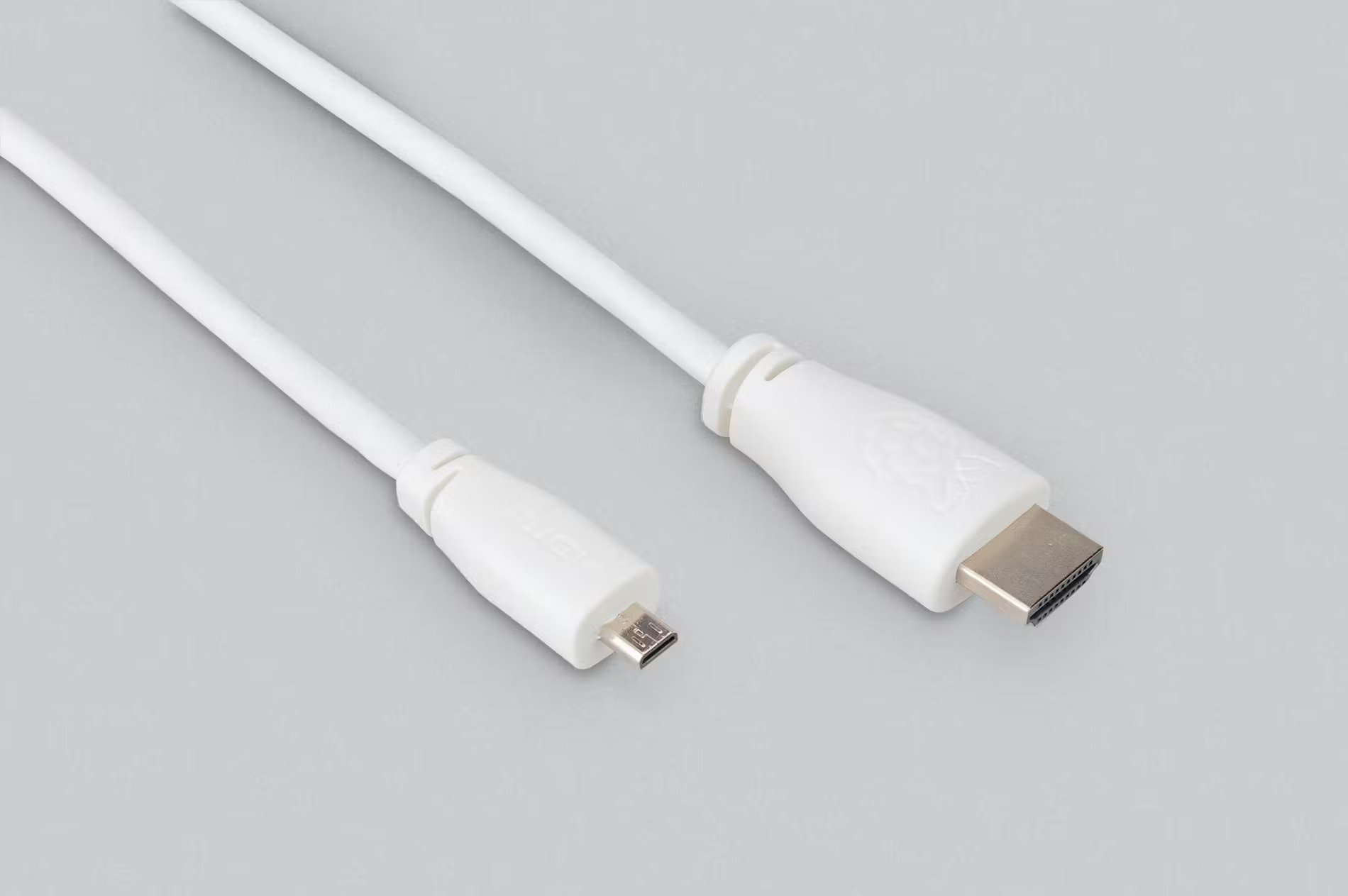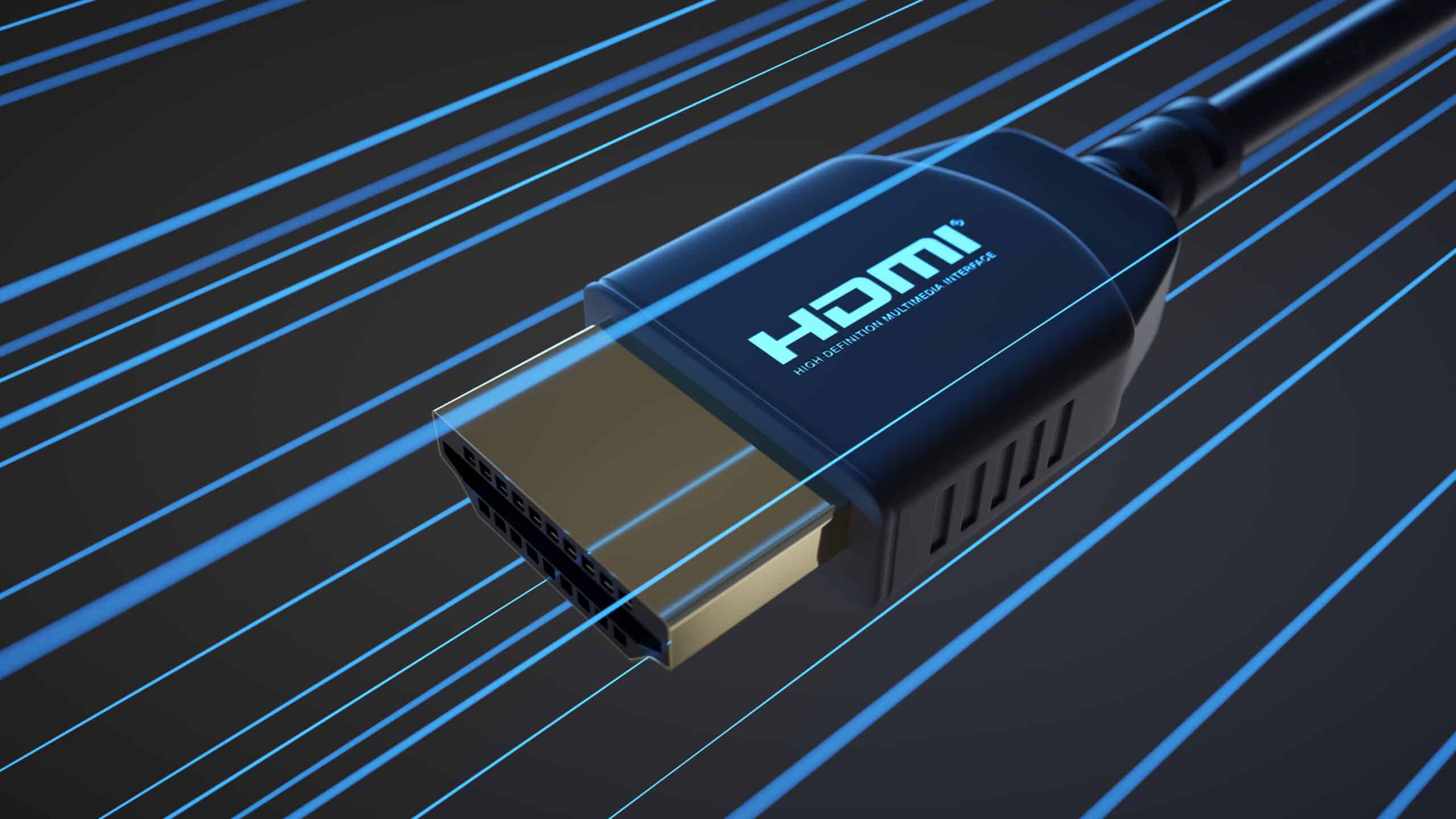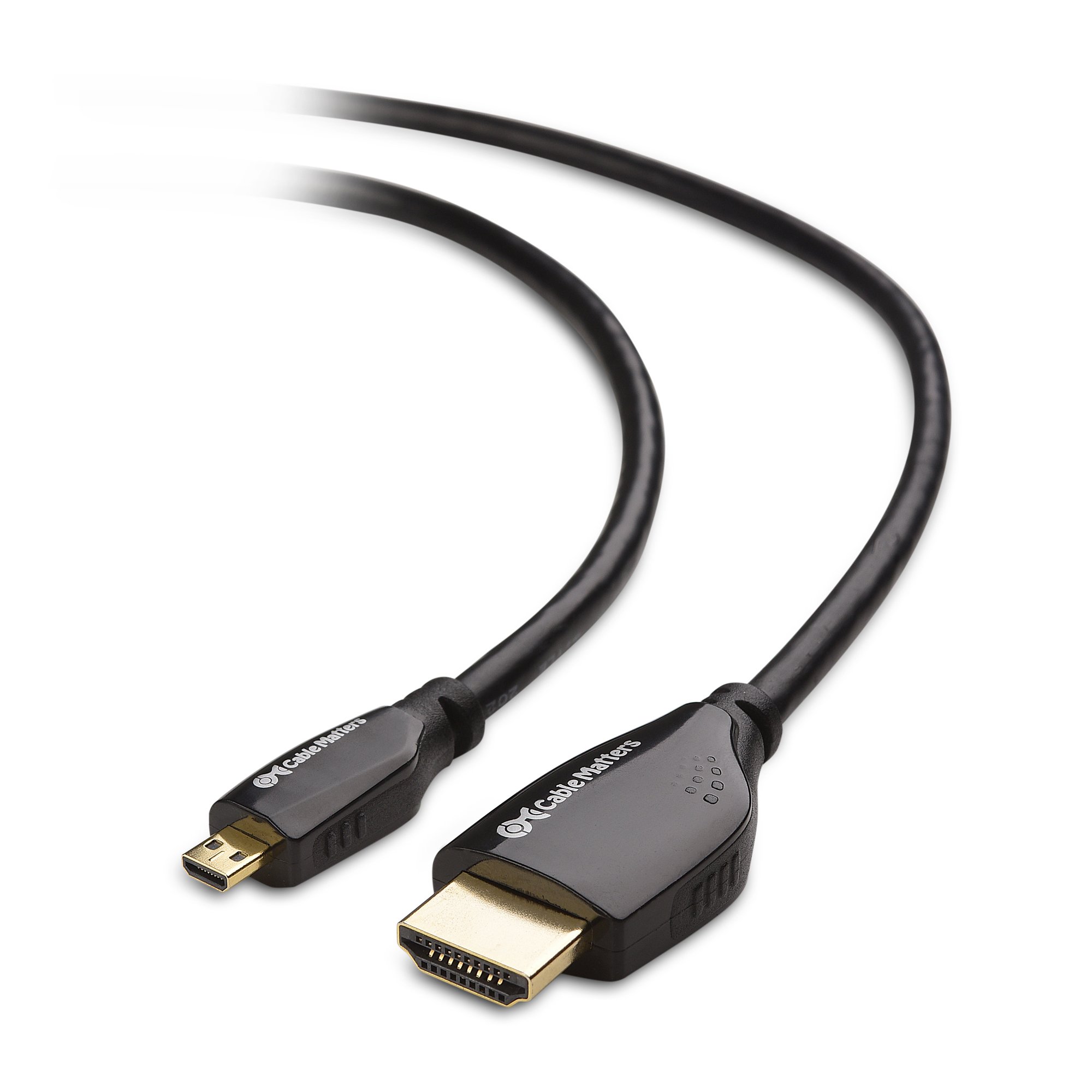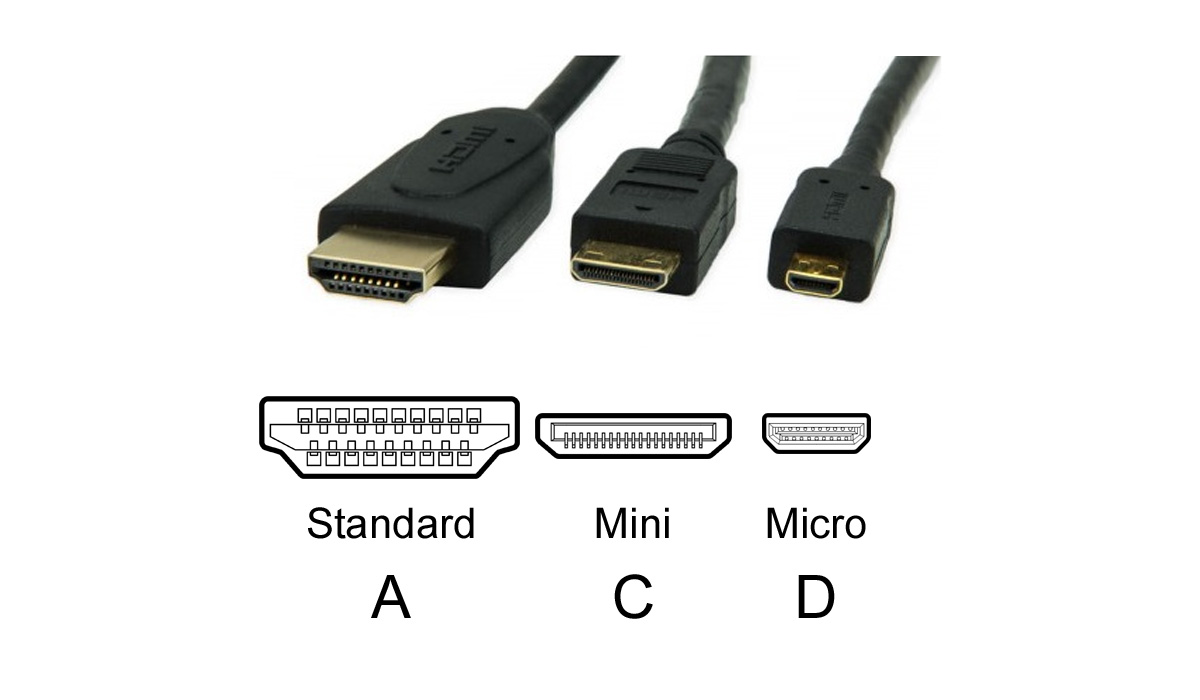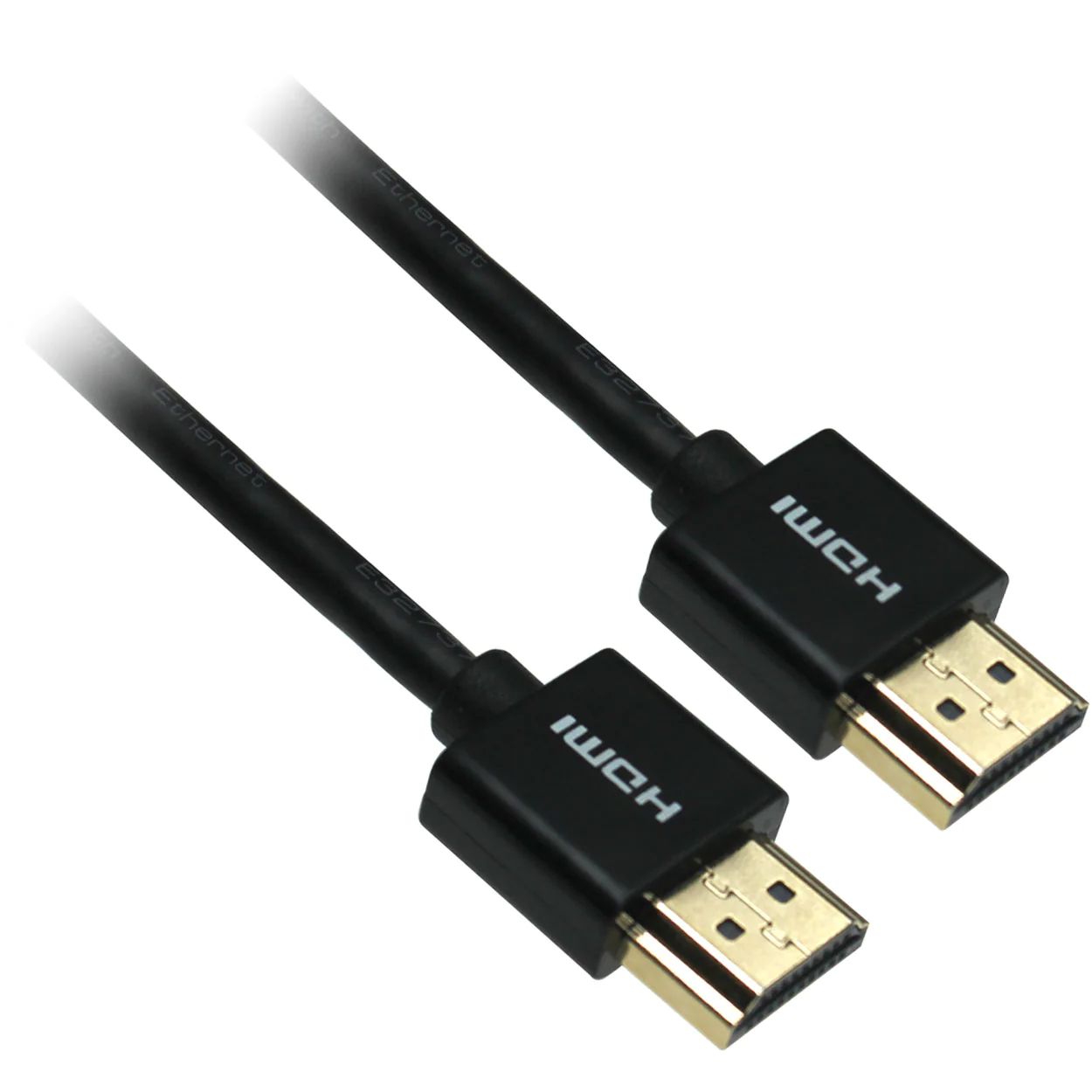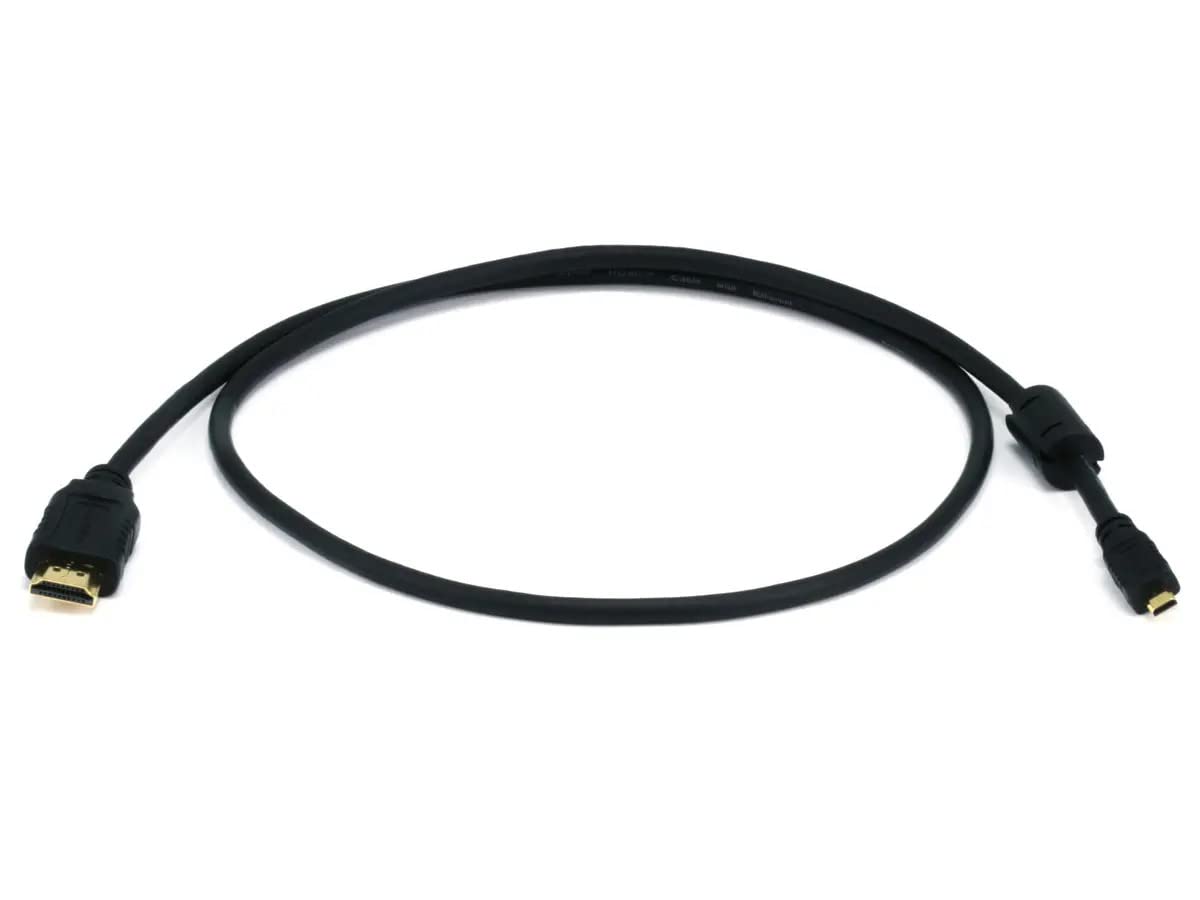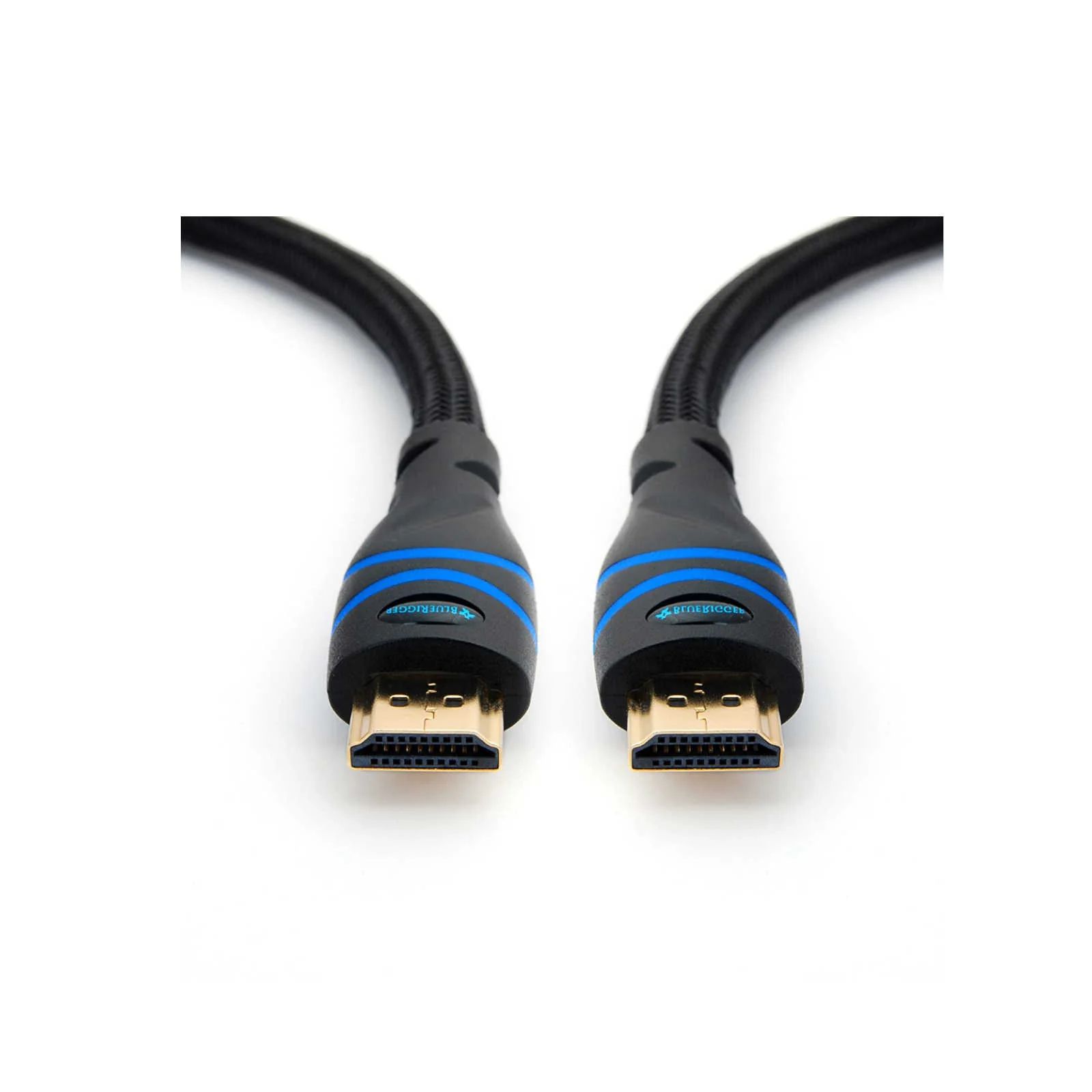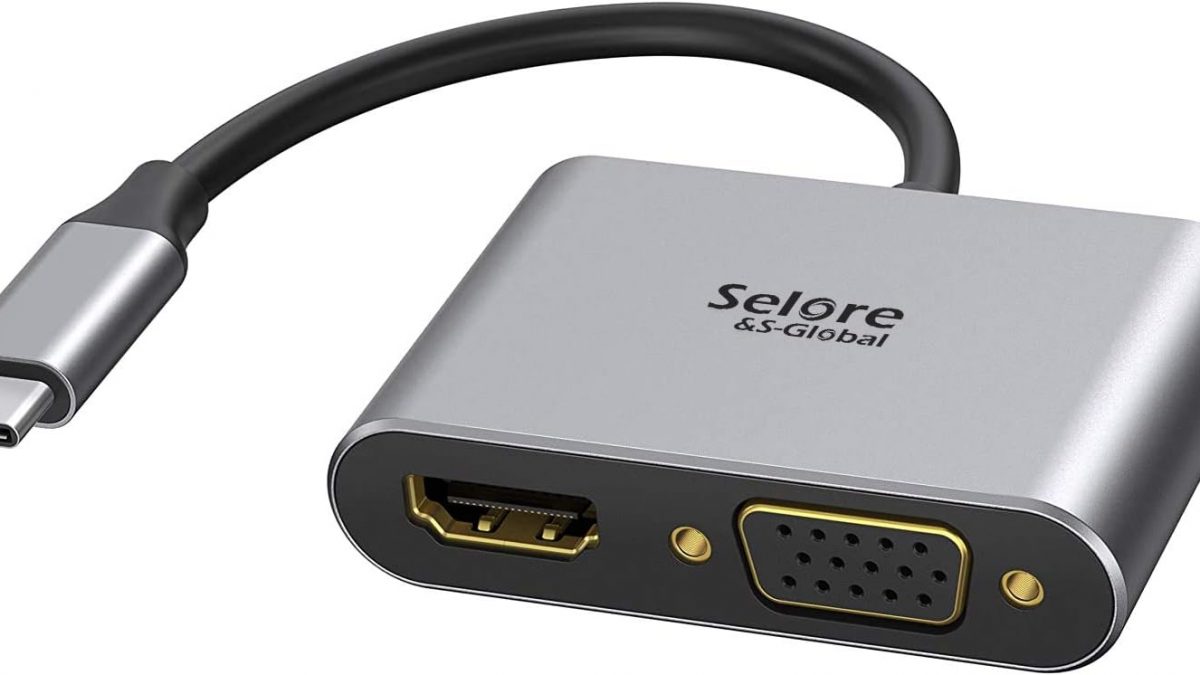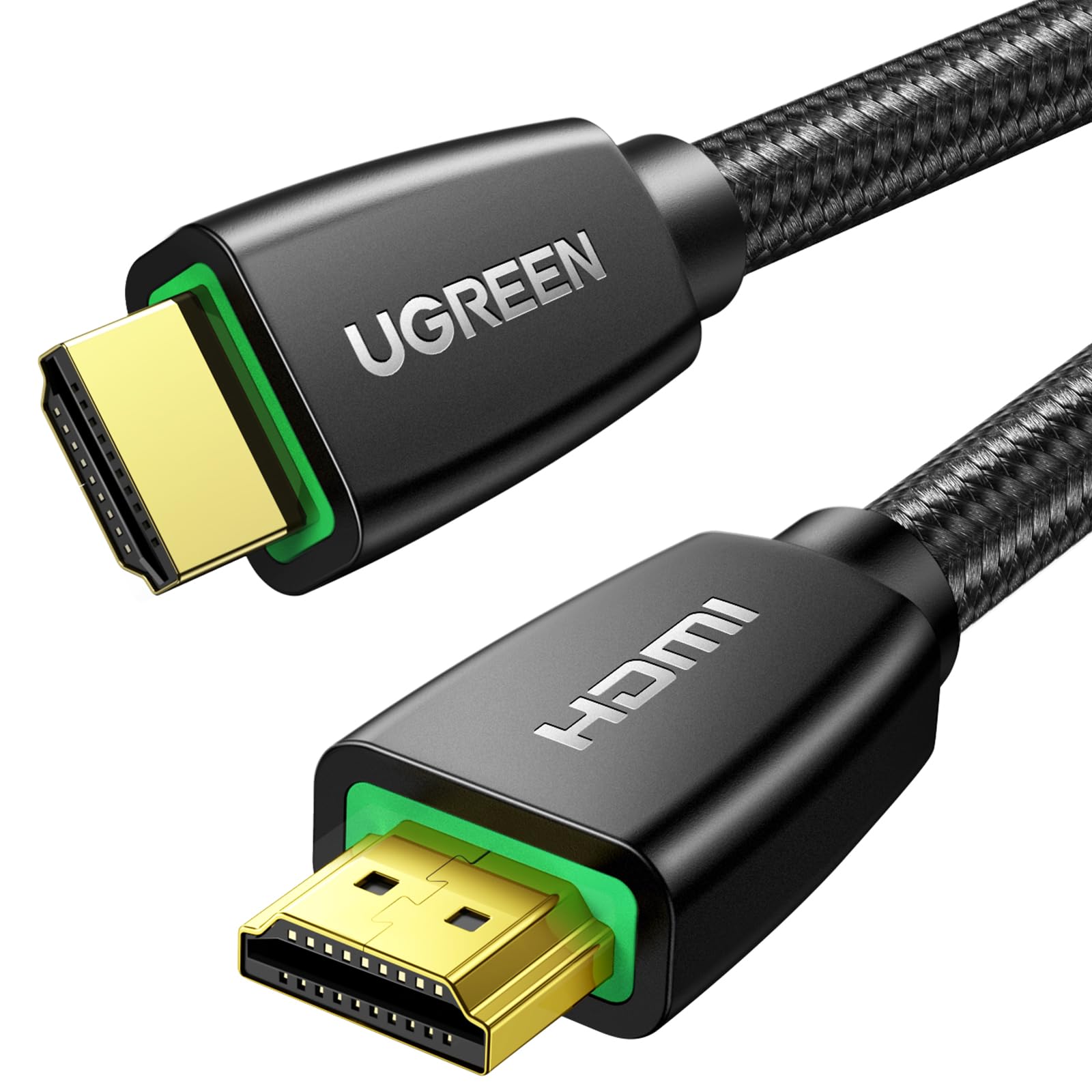Introduction
Welcome to the exciting world of HDMI technology! Whether you’re a tech enthusiast or simply someone who enjoys a good movie or gaming session, you’ve probably come across the term HDMI before. But what exactly is HDMI, and how does it play a role in enhancing the multimedia experience?
High-Definition Multimedia Interface, better known as HDMI, is a standard interface for transmitting uncompressed digital audio and video signals between devices. It has revolutionized the way we connect our devices and has become the go-to option for transferring high-quality audio and video data.
However, as technology progresses and devices become more compact, the need for smaller connector options arises. This is where Micro HDMI comes into play. Micro HDMI is a miniaturized version of the standard HDMI connector, designed specifically for smaller devices such as smartphones, tablets, and digital cameras.
With its smaller form factor, Micro HDMI offers a more convenient and efficient way to connect your portable devices to external displays and enjoy high-definition content. Despite its compact size, Micro HDMI packs a punch, delivering the same audio and visual quality as its larger counterpart.
In this article, we will delve into the world of Micro HDMI and explore its uses, advantages, limitations, and how to connect it to other devices. So, whether you’re looking to connect your smartphone to a TV or wondering if your digital camera supports Micro HDMI, read on to discover all you need to know about this fascinating technology.
What is HDMI?
HDMI, or High-Definition Multimedia Interface, is a widely used technology that allows for the transmission of high-quality audio and video signals between devices. Before HDMI came onto the scene, connecting audiovisual devices required a tangle of different cables, each dedicated to a specific function. HDMI, however, simplifies this process by combining both audio and video into a single cable.
HDMI supports high-definition resolutions, ensuring crystal-clear image quality, and also delivers digital audio signals with pristine sound reproduction. This makes it the ideal choice for connecting devices such as TVs, projectors, game consoles, Blu-ray players, and more.
One of the key advantages of HDMI is its ability to transmit uncompressed audio and video signals. Unlike analog connections, which can suffer from signal loss and degradation, HDMI ensures that every bit of data is delivered faithfully, resulting in superb audiovisual performance.
As technology advances, so does the HDMI standard. The latest version, HDMI 2.1, supports even higher resolutions, higher refresh rates, and enhanced audio formats, providing an immersive and breathtaking multimedia experience.
Moreover, HDMI also supports various additional features, such as the Consumer Electronics Control (CEC) protocol, which enables devices to communicate with each other, allowing for convenient control with a single remote. HDMI also supports Ethernet connectivity, allowing for internet access on compatible devices without the need for extra cables.
Overall, HDMI has become the universal standard for connecting audiovisual devices, providing a seamless and high-quality multimedia experience. It has simplified the way we connect our devices, eliminating the need for multiple cables and ensuring optimal audiovisual performance.
What is Micro HDMI?
Micro HDMI, also known as HDMI Type D, is a smaller version of the standard HDMI connector. It is specifically designed for compact devices like smartphones, tablets, digital cameras, and camcorders. With its smaller form factor, Micro HDMI allows for a more convenient and efficient way to connect these portable devices to external displays.
The Micro HDMI connector retains the same digital audio and video capabilities as the standard HDMI connector. It supports high-definition resolutions, ensuring sharp and clear visuals, and delivers high-quality audio signals. This means you can enjoy all the benefits of HDMI technology, but in a more compact and portable package.
Micro HDMI consists of a small, rectangular-shaped connector with 19 pins. Its small size makes it ideal for integrating into slim and lightweight devices, without sacrificing any audiovisual quality. Micro HDMI cables are also available, featuring a Micro HDMI connector on one end and a standard HDMI connector on the other, allowing for easy connection to TVs, monitors, or projectors.
It’s important to note that not all devices come with a Micro HDMI port. While many smartphones and tablets have transitioned to alternative connectivity options like USB-C or Wireless Display, some older or specialized devices still rely on Micro HDMI. Therefore, it’s essential to check your device specifications to ensure compatibility before purchasing any cables or adapters.
Making use of Micro HDMI can offer numerous advantages, such as the ability to mirror or extend your device’s display to external screens, enabling you to share photos, videos, presentations, or gaming experiences on a larger scale. It also allows for seamless connectivity with compatible devices, without the need for additional converters or adapters.
Overall, Micro HDMI is a compact and efficient connector that allows for high-quality audio and video transmission from portable devices to external displays. Despite its smaller size, it provides the same audiovisual capabilities as the standard HDMI connector, making it a versatile option for connecting a wide range of devices.
Uses of Micro HDMI
The availability of Micro HDMI connectors has opened up a world of possibilities for connecting portable devices to external displays. Here are some of the primary uses of Micro HDMI:
- Connecting smartphones and tablets to TVs: One of the most common uses of Micro HDMI is to connect smartphones and tablets to larger screens, such as TVs or monitors. By simply plugging in a Micro HDMI cable, you can mirror or extend your device’s screen to enjoy videos, photos, or mobile games on a bigger display.
- Sharing presentations or slideshows: Micro HDMI is also useful for professionals who frequently give presentations. By connecting their laptops or tablets to projectors or TVs with Micro HDMI, they can deliver their presentations or slideshows with enhanced visuals and clarity.
- Recording videos with camcorders or digital cameras: Many camcorders and digital cameras still utilize Micro HDMI ports to allow for easy playback of captured videos and photos on larger screens. This is especially valuable for content creators who want to review their footage or showcase their work on a bigger display.
- Gaming on a big screen: Gaming enthusiasts can utilize Micro HDMI to connect their gaming consoles, such as Nintendo Switch or portable gaming devices, to larger TVs or monitors for an immersive gaming experience with enhanced visuals.
- Streaming media players: Media streaming devices, like Chromecast or Amazon Fire TV Stick, often come with Micro HDMI connectivity. This enables users to connect these streaming devices to their TVs or projectors, allowing them to enjoy a wide range of streaming content on a bigger screen.
These are just a few examples of the diverse uses of Micro HDMI. Its versatility, combined with the compact form factor, makes it an ideal choice for connecting a variety of portable devices to external displays, offering users a seamless and immersive multimedia experience.
Advantages of Micro HDMI
Micro HDMI offers several advantages over other connectivity options when it comes to connecting portable devices to external displays. Here are some of its key advantages:
- Compact and portable: The small size of the Micro HDMI connector makes it perfect for compact devices like smartphones, tablets, and digital cameras. It allows for a more convenient and hassle-free way to connect these devices to larger screens without the need for bulky cables or adapters.
- High-quality audio and video: Despite its small form factor, Micro HDMI maintains the same audio and video capabilities as the standard HDMI connector. It supports high-definition resolutions, ensuring crisp and detailed visuals, as well as delivering high-quality audio signals for a truly immersive multimedia experience.
- Easy to use: Connecting devices with Micro HDMI is straightforward. Simply plug in the Micro HDMI cable, and you’re ready to go. There’s no software installation or complicated setup required. This user-friendly interface makes it accessible to individuals of all technical levels.
- Compatibility with existing HDMI devices: With the use of Micro HDMI to HDMI adapters or cables, you can easily connect Micro HDMI devices to standard HDMI ports on TVs, monitors, or projectors. This allows for seamless integration with existing HDMI equipment and expands the connectivity options for your portable devices.
- Versatility in application: Micro HDMI’s versatility makes it suitable for a wide range of applications. From sharing presentations and slideshows to gaming on a bigger screen or recording videos, Micro HDMI accommodates various scenarios and enhances the overall experience of using portable devices.
Overall, Micro HDMI offers a convenient, compact, and high-quality solution for connecting portable devices to external displays. Its compatibility with existing HDMI equipment and versatility in application make it a valuable choice for anyone seeking to enjoy their multimedia content on a larger screen.
Limitations of Micro HDMI
While Micro HDMI offers many advantages, it also has its limitations that users should be aware of. Here are some of the key limitations of Micro HDMI:
- Limited device compatibility: Not all devices come equipped with a Micro HDMI port. As newer connectivity options like USB-C gain popularity, some manufacturers have transitioned away from Micro HDMI. This means that not all devices will be able to utilize Micro HDMI for connecting to external displays.
- Delicate connector: Due to its small size, the Micro HDMI connector is more delicate compared to its larger HDMI counterpart. It can be prone to damage if not handled with care. Users need to be cautious when plugging and unplugging the cable to avoid bending or breaking the pins in the connector.
- Limited cable length: Micro HDMI cables typically come in shorter lengths compared to standard HDMI cables. This can limit the distance between the portable device and the external display, which could be problematic in certain setups where a longer cable is required.
- Adapter or cable needed for compatibility: To connect a device with a Micro HDMI port to a display with a standard HDMI port, an adapter or cable is often required. While these adapters are widely available, they introduce an additional component that can sometimes impact the overall user experience or add to the cost of connectivity.
- Not suitable for high-power devices: Micro HDMI connectors are not designed to handle high levels of power, which means they are not suitable for charging or powering devices. Users will still need to rely on separate charging methods for their portable devices when using Micro HDMI for display connectivity.
It’s essential to consider these limitations and assess your specific needs before relying on Micro HDMI for your connectivity requirements. While it is a convenient and compact solution, it may not always be the best fit for every device or situation.
How to Connect Micro HDMI to Other Devices
Connecting a device with a Micro HDMI port to an external display is a straightforward process. Here’s a step-by-step guide on how to connect Micro HDMI to other devices:
- Identify the Micro HDMI port: Locate the Micro HDMI port on your device. It is smaller and more rectangular in shape compared to other ports.
- Obtain a Micro HDMI cable: Purchase a Micro HDMI to HDMI cable to connect your device to the external display. Make sure to choose a cable that suits your needs in terms of length and quality.
- Connect the Micro HDMI cable: Plug one end of the Micro HDMI cable into the Micro HDMI port on your device. Ensure a secure connection by gently inserting the connector into the port.
- Connect the other end of the cable: Plug the other end of the Micro HDMI cable into the HDMI port on the external display device, such as a TV or monitor.
- Switch device input: If the external display device has multiple inputs, use the remote control or buttons on the display to select the HDMI input where you connected your device.
- Configure display settings (if necessary): In some cases, you may need to adjust the display settings on your device to ensure it is outputting the correct resolution or aspect ratio for the external display. Refer to your device’s user manual for instructions on how to do this.
- Power on the devices: Switch on both your portable device and the external display device. They should detect the connection automatically and display the output from your device.
That’s it! You have successfully connected your device with a Micro HDMI port to an external display using a Micro HDMI cable. Enjoy the enhanced audio and video experience on the larger screen.
Remember to handle the Micro HDMI cable and connector with care to prevent any damage, and ensure that both devices are compatible with Micro HDMI before attempting the connection.
Common Devices that Use Micro HDMI
Micro HDMI is commonly used in various portable electronic devices that require connectivity to external displays. Here are some of the common devices that utilize Micro HDMI:
- Smartphones and tablets: Many smartphones and tablets feature Micro HDMI ports, allowing users to connect their devices to larger screens for multimedia playback, gaming, or sharing content with others.
- Digital cameras and camcorders: Professional and consumer-grade digital cameras and camcorders often use Micro HDMI ports. This enables photographers and videographers to review their captured images and videos on a bigger display for a more detailed analysis.
- Laptops and ultrabooks: Some ultrabooks and laptops come equipped with Micro HDMI ports as a secondary display output option. This allows users to connect their devices to external monitors or projectors for extended screen real estate or enhanced presentations.
- Portable gaming consoles: Devices like the Nintendo Switch and PlayStation Vita utilize Micro HDMI for connecting to TVs or monitors, providing gamers with the option to enjoy their favorite games on a larger screen with better visual fidelity.
- Media streaming devices: Many media streaming devices, such as Chromecast or Roku Streaming Stick, employ Micro HDMI for connecting to TVs or projectors. This enables users to cast their favorite movies, TV shows, or streaming content onto a bigger screen for a more immersive viewing experience.
- Portable media players: Some portable media players, like certain models of the GoPro camera or portable DVD players, feature Micro HDMI ports. This allows users to enjoy their videos or movies on a larger display during travel or when sharing content with others.
These are just a few examples of the common devices that make use of Micro HDMI. It’s important to check the specifications of your specific device to confirm if it has a Micro HDMI port before attempting to connect it to an external display.
Micro HDMI has become a popular choice for many portable devices because of its compact size, compatibility, and ability to deliver high-quality audio and video signals to larger screens.
Tips for Using Micro HDMI
When using Micro HDMI to connect your portable device to an external display, there are a few tips to keep in mind for a smooth and optimal experience. Here are some helpful tips:
- Check device compatibility: Ensure that both your portable device and the external display support Micro HDMI connectivity. Some devices may have transitioned to other connectivity options, so it’s important to verify compatibility before attempting the connection.
- Use high-quality cables: Invest in a high-quality Micro HDMI to HDMI cable to ensure a reliable and stable connection. A well-made cable will minimize signal loss and provide better audiovisual performance.
- Handle the cable and connector with care: The Micro HDMI connector is smaller and more delicate compared to larger connectors. Make sure to handle the cable and connector gently to avoid bending or breaking the pins. Avoid pulling or yanking on the cable when disconnecting.
- Secure connections properly: When plugging in the Micro HDMI cable, make sure it is securely and fully inserted into the device’s port. A loose connection can result in audio or video dropouts or a lack of signal altogether.
- Check display settings: Depending on your device, you may need to adjust the display settings to ensure optimal output on the external display. This may involve selecting the correct resolution, aspect ratio, or display mode that is compatible with the external display.
- Consider cable length: Micro HDMI cables come in different lengths. Determine the required length based on your setup and the distance between your device and the external display. Avoid using excessively long cables, as they can lead to signal degradation.
- Disconnect properly: When disconnecting the Micro HDMI cable, gently remove it from both the device and the external display. Avoid pulling on the cable itself, as this can potentially damage the connector.
- Keep your devices charged: Micro HDMI transfers audio and video signals, but it does not provide power to your portable device. Ensure that your device is adequately charged or connected to a power source, especially during longer sessions or when using power-intensive applications.
By following these tips, you can ensure a reliable and hassle-free experience when using Micro HDMI to connect your portable device to an external display. Enjoy the convenience and enhanced audiovisual experience that Micro HDMI brings!
Conclusion
Micro HDMI is a compact and versatile connector that allows for seamless connectivity between portable devices and external displays. With its smaller form factor, Micro HDMI offers a convenient solution for connecting devices such as smartphones, tablets, and digital cameras to larger screens like TVs or monitors. It provides the same high-quality audio and video transmission as the standard HDMI connector, ensuring an immersive multimedia experience.
Throughout this article, we have explored the basics of HDMI technology, delved into what Micro HDMI is, discussed its uses, advantages, limitations, and provided tips for using it effectively. Micro HDMI allows for a variety of applications, including sharing content, delivering presentations, gaming, and enjoying multimedia on a bigger screen.
While Micro HDMI has its limitations, such as limited device compatibility and the need for additional adapters or cables, it remains a popular choice for many portable devices. Its convenience and ability to deliver high-quality audio and video signals make it a valuable tool for connecting devices to external displays.
Remember to handle the Micro HDMI cable and connector with care and ensure compatibility between the devices before attempting to connect them. By following the tips provided, you can optimize your Micro HDMI experience and enjoy the benefits of seamless connectivity and enhanced audiovisual performance.
Whether you’re a tech enthusiast, content creator, or simply someone who wants to enjoy their multimedia content on a bigger screen, Micro HDMI provides a compact and efficient solution. Embrace the possibilities that Micro HDMI offers and unlock a whole new level of connectivity and entertainment.







